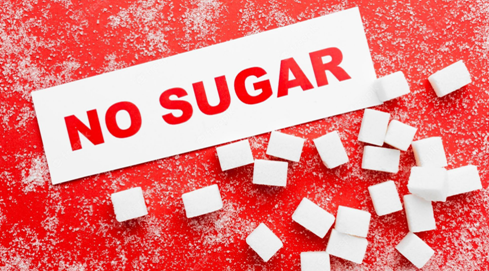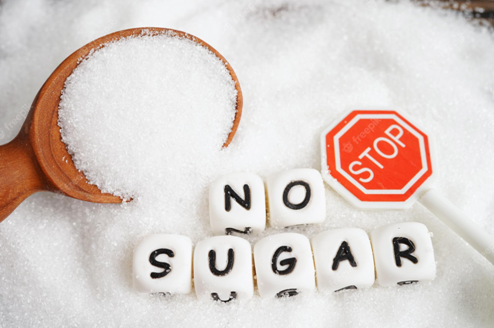I recently heard a fitness trainer say, “You won't get fat eating fruit, " I wondered why someone may think this. Why has fruit become lumped in with harmful, processed sources of carbohydrates (sugar)? Quick searches of fruit and fructose may have explained a few of the fear. Driving a car however is largely unnecessary. Fruit is different thing as white refined sugar, i'd like to explain why.
Broadly speaking, fruit is an excellent thing. It's high in vitamins and minerals. Most have phytochemicals that offer antioxidant benefits. They're also great sources of fibre. Like the majority of things to do with food, there is always more to the story.
Foods are essentially comprised of three macronutrients: Carbohydrates, Proteins or Fats. All fruits are a way to obtain carbohydrates. However, all fruits aren't equal with regards to how they impact our blood sugar levels.
Our body works best when our blood glucose stays in a regular healthy range. For individuals without diabetes, this is between 4.0 (fasting) and 7.8mmoL/L (2 hours after eating) (72 to 140 mg/dL). For people with type 2 diabetes, the target range is 4.0 (fasting) to under 8.5mmoL/L (2 hours after eating) (1)
Our body is stressed when blood sugar levels proceed through repeated high peaks and low valleys through the entire day. Hyper and hypo-glycemia episodes cause damage to the cells and cardiovascular system and set us up for mood swings (including anxiety) and cravings.
Some fruit is higher on the Glycemic Index and can lead to greater blood glucose spikes and crashes. The more ripe, tropical and hybridized the fruit, the more carbohydrate (sugar) it includes and the more impact it may have on our blood glucose levels.

Let's consider the GI and the Glycemic Load Index to higher understand this.
The Glycemic Index (GI). The GI is a range that ranks the glycemic impact of carb-containing foods from 0 to 100. It measures how fast 50 grams of carbs will raise blood sugar levels in comparison to 50 grams of carbs from white bread (which features a GI value of 100). When it is significantly less than white bread, then your GI is less than 100. Foods with a top GI value cause rapid blood glucose spikes. Foods with low GI value (usually 55 or less) are digested more slowly, causing a more gradual increase in blood glucose. Put simply, the reduced the number the better. Note, yes a slice of toasted white bread[1] includes a higher glycemic impact when compared to a chocolate bar. True story.
It is important to know that the GI value of a food is an excellent reference but you can't utilize it in isolation of other considerations. How a food is prepared, what it's eaten with, how ripe the meals is, how much you eat, the order in that you eat it, and even how it's cooked all change the glycemic impact. For example, in case a food such as for example an item of fruit is eaten with protein or with a fatty food such as for example nuts, the affect blood glucose is lowered.
Glycemic Load. To nuance things a bit more, the Glycemic Load (GL) was introduced to take into consideration the serving size. GL values are calculated from the GI, how many carbs, and the portion size. Obviously the bigger the portion, the larger the Glycemic Load score. GL is merely another tool but if you are curious about the glycemic load of any particular fruit you can go here for details.
Now let's look at fibre.
Where does fibre fit in? Many fruits are good resources of dietary fibre. Fibre helps you feel fuller for longer, helps discourage overeating, helps lower cholesterol, and is the key to the ever-important regular bowel movements. Fibre is itself a carb, but it is (almost entirely) not digested and it is not became blood glucose. (In other words, most fibre fades the same way it goes in.) When taking a look at a diet panel of a food, the grams of fibre could be subtracted from the grams of carbs to find out the ‘net carb'value of the food. Fruits with higher fibre content generally have a lowered GI and a lower GL. Berries typically come on top.
How about dried fruit? Dehydrating fruit concentrates the sugar and calories into smaller packages ultimately causing a greater glycemic load. You might not eat five fresh apricots in a sitting, nonetheless it wouldn't take much effort to consume 5 dried ones. It is easy to over-eat dried fruit this means it is simple to boost our glucose levels well beyond safe ranges. Furthermore, if the dried fruit wasn't dehydrated by you, there's a chance that the maker added more sugar.
Is Fruit Juice Healthy? While juice retains much of the vitamins and minerals, there is no fibre to decrease the absorption of the sugar that may lead to a spike. ‘Free sugar'or ‘free fructose'(sugar lacking fibre) is known to be the absolute most damaging method to ingest sugar. It is connected to non-alcoholic fatty liver disease and even colon cancer. This includes sugars originating from fruit as well as high fructose corn syrup put into foods and drinks. Blending the fruit with the fibre may be better but the best and safest method to ingest fruit is strictly because it appears in nature.

If you are creating a concerted effort in order to avoid sugar and processed food items, for weight loss and health purposes, that is awesome. This does not mean, however, that you need to prevent fruit. Fruit that's processed into jam, chutneys, sauces, jellies, dried fruit, dried roll-ups etc., isn't healthy to eat. But, for the majority of us, fruit is.
“Wearing a CGM (Continuous Glucose Monitor) can help you determine which fruits are safe for you yourself to eat, whenever, in addition to simply how much, how often and using what other foods,” states Florence Christophers, a professional health coach with expertise in sugar addiction recovery. “Everyone is different”, she adds.
“It is especially helpful to select organically grown fruits that are local to your climate and in season,” add Christophers. “Because the fruit is in your neighborhood grocery store, that will not mean it is local or in season. Big difference there.”
The human body is a wonderfully complex machine that has been built to thrive on a wide selection of whole foods. Fruits is an important and valuable option even for folks who are sugar-sensitive, attempting to lose excess weight, or reverse a chronic disease.
To learn more on which sugars are harmful and just how to successfully lower your consumption, go to Kick Sugar Summit.The dates are October 16-23, 2023. Participation is free.
please visit the site at /glycemic-index.net/glycemic-index-of-fruits/ to get the more information about glycemic-index.net/glycemic-index-of-fruits/.
